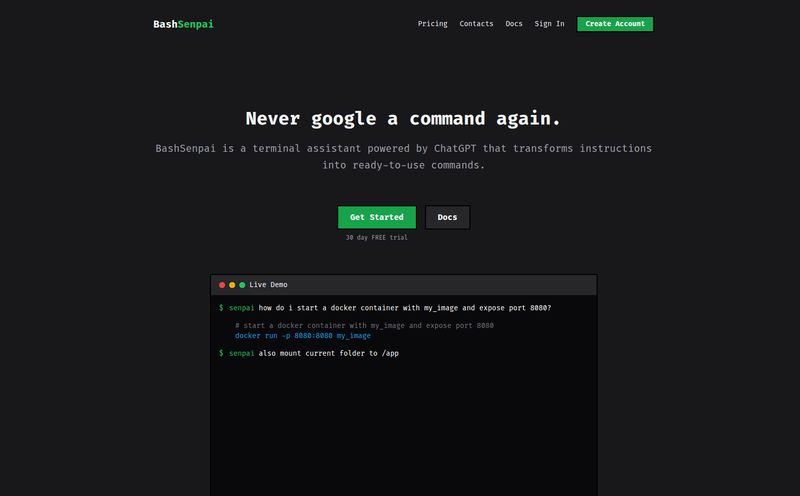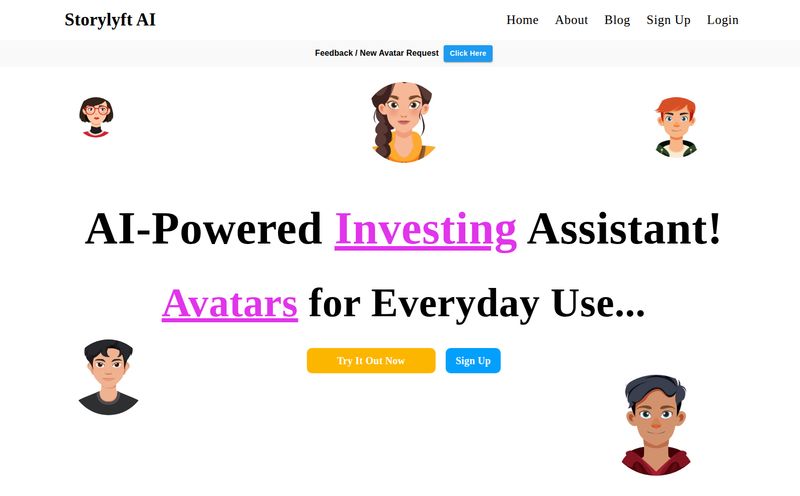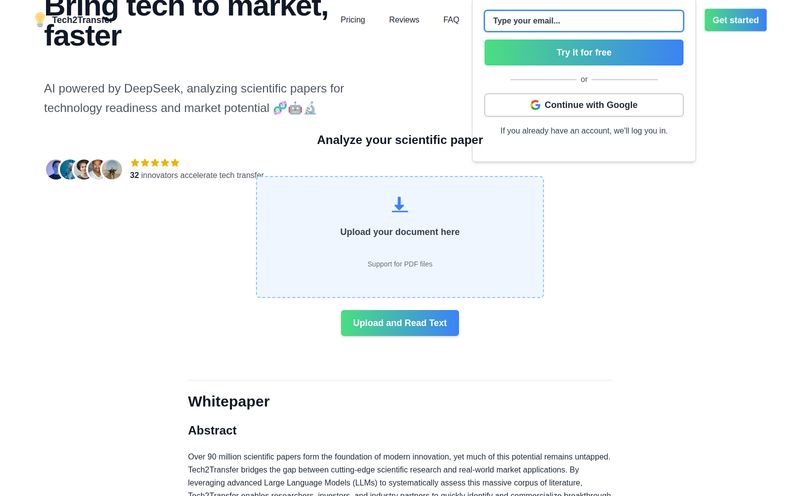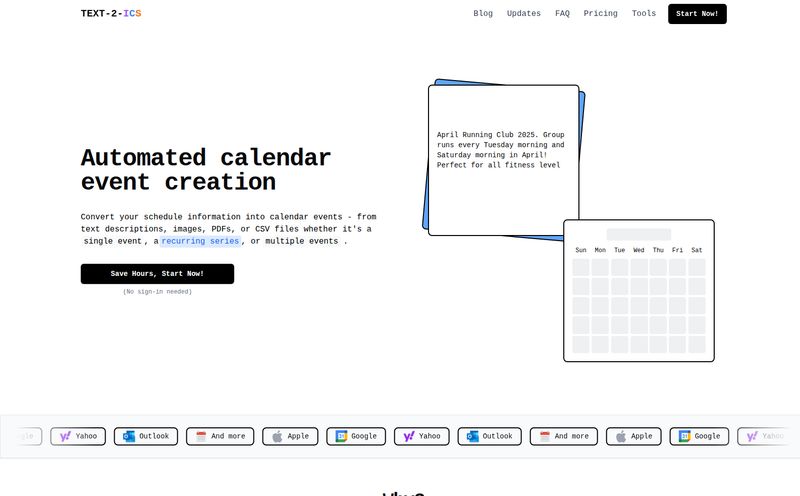In the last couple of years, the AI space has exploded. It feels like every week there's a new 'GPT-killer' or a groundbreaking model from Google or Anthropic that sends SEOs and content creators like me into a frenzy. We’re all scrambling to keep up, testing prompts, and trying to figure out which tools are just hype and which ones are actually, you know, useful.
But I've noticed that most of the chatter is focused on Silicon Valley. We talk a lot about the American players, but there's a whole other ecosystem of AI development happening over in China that's moving at a blistering pace. And that’s what I want to talk about today. I’ve been keeping my eye on a platform that isn’t just a chatbot—it’s more like a complete AI command center. I’m talking about 智谱清言 (Zhipu Qingyan) from Zhipu AI.
So, What Exactly is Zhipu Qingyan?
At its heart, Zhipu Qingyan is a conversational AI built on Zhipu's own GLM (General Language Model). Think of GLM as their answer to the GPT series. But calling it just a chatbot is like calling a smartphone just a phone. It's so much more. This thing is designed to be a multi-tool for creation, analysis, and research. It's an AI-powered Swiss Army knife, and honestly, the sheer number of features packed into it is kind of wild.

Visit 智谱清言
It's not just about chatting in Chinese (which it does incredibly well, by the way). It’s about creating PowerPoints, analyzing datasets, writing code, and even generating video. It’s an ambitious play, and from my perspective, a pretty compelling one.
A Look Inside the Toolbox
This is where things get really interesting. When you pop the hood on Zhipu Qingyan, you don't just find one engine. You find a whole workshop of specialized tools. It’s clear they aren’t trying to do just one thing well; they're trying to do everything.
For the Creatives and Marketers
This is the stuff that gets me excited. The platform has a whole suite for content creation. You have an AI drawing tool, which is becoming standard fare, but also an AI-generated PPT tool. Imagine just feeding it an outline and having it spit out a decent first draft of a presentation, complete with layouts and images. The time savings alone... it's huge.
But the feature that really caught my eye is the AI video generator, called 沉思清影 (Chénsī Qīng Yǐng). The ability to go from a simple text prompt to a video clip is one of the next big frontiers in generative AI, and Zhipu has it right here in their toolkit. While I'm sure it has its limits, the potential for social media content, explainers, and ad creative is massive.
For the Tech-Savvy and Data-Driven
If you're more of a developer or analyst, don't worry, they haven't forgotten you. There’s a code assistance feature named 代码速写 (Dàimǎ Sùxiě), which translates to something like 'Code Sketch'. It's meant to be a partner for writing and debugging code, much like GitHub Copilot. I've found these tools to be invaluable for getting past mental blocks or just speeding up grunt work.
Even more impressive are the data analysis tools. You can upload data and have the AI help you sort through it, find trends, and create visualizations. This lowers the barrier to entry for data science and can give marketers and business owners some serious insights without needing a dedicated analyst.
Your Personal Research Assistant
Beyond the fancy creation tools, it also nails the fundamentals. Its AI Search and AI Reading capabilities are designed to give you summarized, synthesized answers from across the web or from long documents. Instead of just getting a list of links, you get a coherent answer. It’s a subtle shift, but one that completely changes how you find information.
The 'Build-Your-Own-Bot' Feature
This might be the most powerful feature of all. Zhipu Qingyan allows you to create your own intelligent agents. Think of them as custom AIs that are pre-programmed for specific tasks. You could create an agent that's an expert in your company's product documentation to handle customer queries, or one that's a master of SEO keyword research for your blog. It’s very similar to OpenAI's custom GPTs, and it points to a future where we all have a small army of personalized AI assistants.
The Real-World Experience: My Take
Alright, so it sounds great on paper. But what’s it like in practice? Like any piece of cutting-edge tech, it's a mix of incredible highs and a few... let's call them 'reality checks'.
What's Genuinely Impressive
The sheer breadth of functionality is the biggest win. The fact that I can brainstorm ideas, have it write some Python code, generate a presentation, and then create a short promo video for it all within a single platform is just... amazing. For anyone working with or targeting the Chinese market, the native language proficiency is a game-changer. It's not just a translation; it understands the cultural context.
A Few Reality Checks
Now for the flip side. Zhipu is transparent that some of these features are still in beta. And in the fast-moving world of AI, 'beta' can mean anything from 'nearly perfect with a few quirks' to 'don't bet your career on this just yet'. So, a little caution is advised.
The generated content is for reference only.
This is a line directly from them, and it's a smart one. Like all current AI, it can make mistakes. Fact-check its output, especially for important work. Don't just copy and paste blindly. Please.
The other big hurdle? The hardware requirements for some features are pretty steep. They mention needing an Intel® Core™ Ultra processor and 24GB+ of RAM for certain functions. That's not your average laptop. This suggests some of the heavy lifting might be done locally on your machine, which is interesting, but it does create a barrier for entry for some users. It’s a bit of a bummer, but also a sign of how much power these tools require.
The Big Question: What's the Price Tag?
Here’s the million-dollar question—or, hopefully, the much-less-than-a-million-dollar question. As of my last check, Zhipu AI hasn't published a clear, public pricing page for Zhipu Qingyan. This isn't uncommon for platforms that are rapidly evolving or targeting enterprise clients first.
My educated guess? We'll probably see a freemium model emerge. A generous free tier that lets you test out the core features, with a monthly subscription for power users who need higher limits, access to the most advanced models, or features like the custom intelligent agents. It’s the standard playbook in SaaS and AI right now, and for good reason.
Who Should Give Zhipu Qingyan a Spin?
So, is this tool for you? I'd say it's a definite 'yes' for a few groups:
- Marketers and Businesses focused on the Chinese market. The native language and cultural understanding is a massive advantage.
- AI Enthusiasts and Developers who want to see what a non-Western AI ecosystem looks like. It’s fascinating to compare the feature sets and priorities.
- Content Creators who are tired of juggling five different AI tools. The all-in-one approach could seriously streamline your workflow.
- Researchers and Analysts who could use an AI partner to sift through data and documents.
If you're just a casual user, the potential hardware requirements might be a bit much, but it's still one to keep on your radar.
Final Thoughts
Zhipu Qingyan is more than just another chatbot. It's a bold, ambitious statement from Zhipu AI. It’s a platform that's trying to be a genuine partner in both creative and analytical work. Sure, it has some rough edges and a few question marks, like any new tech. But it shows a clear vision for an all-in-one AI future.
For me, it’s a powerful reminder to look beyond the usual suspects in the AI race. There is incredible innovation happening all over the globe, and Zhipu Qingyan is a prime example. It’s one I’ll be watching—and using—very closely.
Frequently Asked Questions about Zhipu Qingyan
1. What is Zhipu Qingyan in simple terms?
Think of it as a super-app for AI. It's a conversational AI from Chinese company Zhipu AI that can also create presentations, generate videos and images, help with coding, and analyze data, all in one place.
2. What makes Zhipu Qingyan different from ChatGPT?
While both are powerful language models, Zhipu Qingyan integrates a wider array of specific tools, like native PPT and video generation, directly into its platform. Its biggest differentiator is its deep optimization for the Chinese language and context.
3. Is Zhipu Qingyan free to use?
There isn't a clear public pricing model yet. It's likely that there is a free version with some limitations, and more powerful features will require a subscription, but this has not been confirmed.
4. Do I need a powerful computer to use it?
For basic chat functions, probably not. However, Zhipu AI has stated that some advanced features require a high-end setup, including a newer Intel Core Ultra processor and at least 24GB of RAM. So, for full functionality, yes, you might need a powerful machine.
5. Can I use Zhipu Qingyan in English?
While its primary strength is Chinese, most major large language models have multilingual capabilities. You can likely interact with it in English, but its performance and nuanced understanding will be best in its native language.



